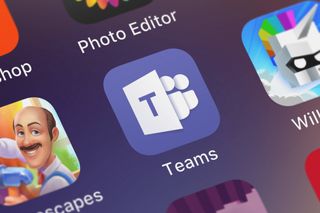Microsoft bolsters Teams platform with host of call quality improvements
New features leverage AI and machine learning to improve both voice and video quality across the platform

Microsoft has announced the availability of several new Teams features, which have been designed to tackle common audio and video challenges across various environments.
Built on the platform’s recent AI-powered advancements, the additions include echo cancellation, audio adjusting in poor acoustic environments, as well as the ability for users to speak and hear at the same time without interruptions.

Accelerating AI modernisation with data infrastructure
Generate business value from your AI initiatives
“Disruptive echo effects, poor room acoustics, and choppy video are some common issues that hinder the effectiveness of online calls and meetings,” Microsoft explained in a blog post.
“Through AI and machine learning, which have become fundamental to our strategy for continual improvement, we’ve identified and are now delivering innovative enhancements in Microsoft Teams that improve such audio and video challenges in ways that are both user-friendly and scalable across environments.”
Voice quality improvements
To help counter troublesome echo sounds, Microsoft Teams now leverages AI to recognise the difference between noise from a speaker and the user’s voice, serving up effective echo cancellation without suppressing speech.
There’s also new functionality that Microsoft is calling “de-reverberation,” which uses machine learning to ensure speech sounds as if users are speaking into a close-range microphone in rooms with poor acoustics.
Channel Pro Newsletter
Stay up to date with the latest Channel industry news and analysis with our twice-weekly newsletter
Additionally, Microsoft has improved the ability for users to interrupt or interject in a conversation with minimal interference or echo when the speaker and mic are close to each other, while background noise suppression has been boosted with an improved reduction of unwanted sounds.
Video quality improvements
On the visual front, Microsoft has added real-time screen optimisation which adjusts itself for the content being shared. Essentially, Teams will detect and adjust the characteristics of the content in real-time to improve the legibility or quality of video playback.
The platform’s fresh AI-based optimisation also helps to adjust video playback in challenging bandwidth conditions, the Redmond firm said, while new brightness and focus filters will better accommodate low-light environments.
“In addition to bringing new features and capabilities to Teams, we’ll continue to explore new ways to use technology to make online calling and meeting experiences more natural, resilient, and efficient,” Microsoft added.
Dan is a freelance writer and regular contributor to ChannelPro, covering the latest news stories across the IT, technology, and channel landscapes. Topics regularly cover cloud technologies, cyber security, software and operating system guides, and the latest mergers and acquisitions.
A journalism graduate from Leeds Beckett University, he combines a passion for the written word with a keen interest in the latest technology and its influence in an increasingly connected world.
He started writing for ChannelPro back in 2016, focusing on a mixture of news and technology guides, before becoming a regular contributor to ITPro. Elsewhere, he has previously written news and features across a range of other topics, including sport, music, and general news.





